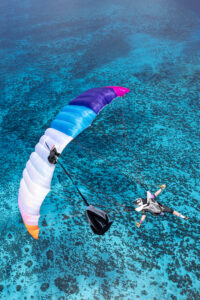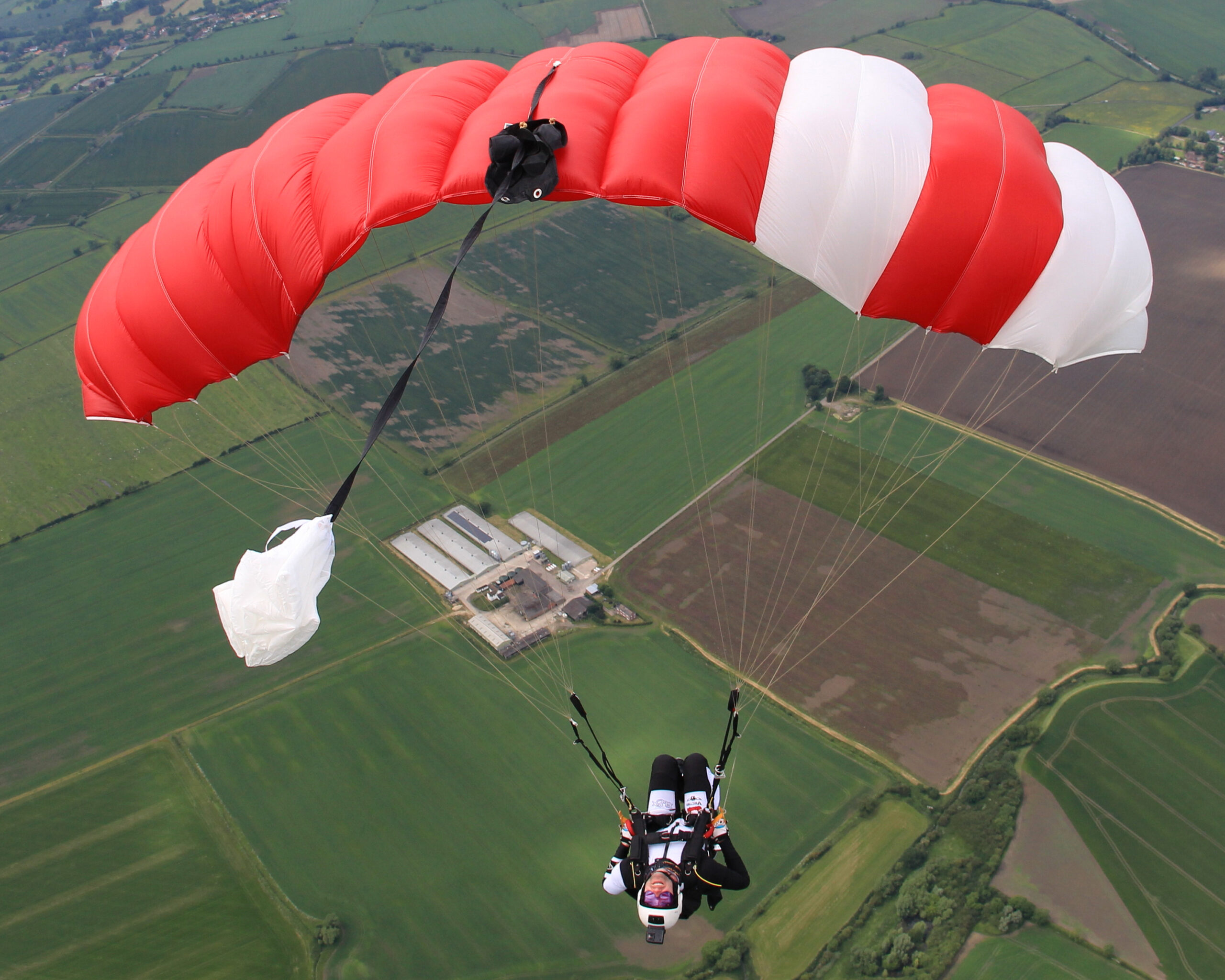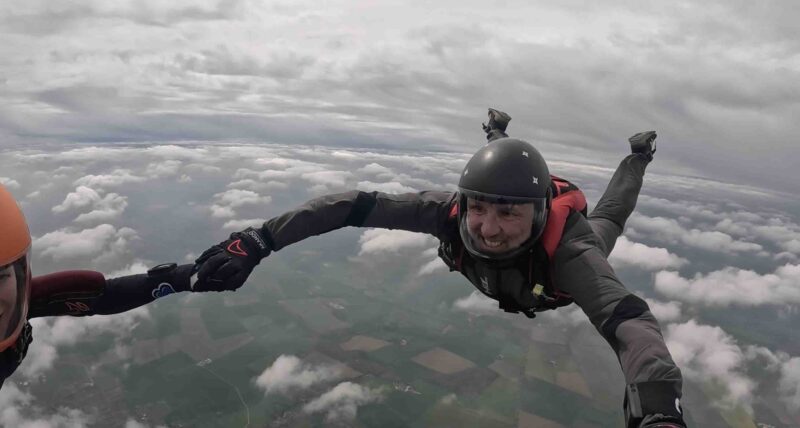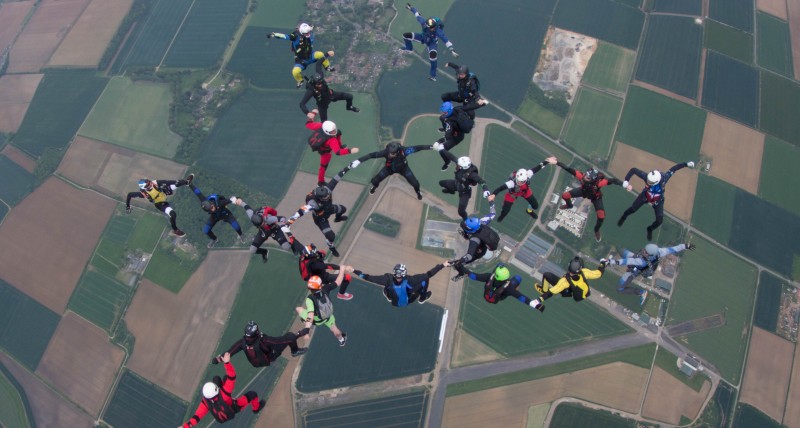Deployment drama? Let’s talk about pilot chutes.
By Gary Stevens
Images courtesy of Gary Wainwright
Here’s a question for you: Where do your funky openings come from? They’re not reliably one way or another, are they? They’re just…funky. Which is to say that each one is not great in its own, individual, snowflakey kinda way: whippers, twists, off-headings, inconsistencies…a nicely varied buffet of not-so-nice.
You’ve probably already tried out a few promising solutions. You might have tried changing how you pack, experimented with a few different body position tweaks on deployment and probably had a coach or a trusted friend film you during your opening to, fingers crossed, identify the problem.
If it’s still a mystery, I have an idea:
Look in your BOC.
If you suffer from the ‘funky opening problem,’ the culprit could potentially be right there in your pull hand. Change your pilot chute, and, like magic, everything changes. (As far as your canopy’s deployment is concerned, that is.)
Here’s another thing: If you’re coming for the deployment improvements, you’ll stay for the tech. The humble pilot chute, like so many other technologies in skydiving, is an absolute wonder of engineering. It’s an elegant piece of design that every jumper should know a little more about.
What colour is your pilot chute?
If your pilot chute was made by UPT Vector, colour is a very telling thing indeed. In that case, if your PC is ZP, it’ll be black; if it’s F-111, on the other hand, it’ll be white.
Another word on size and ZP: We don’t typically make them much bigger than 28”. (The beauty of a small PC, of course, is that it will fit into the scaled-down BOC pocket of a small container.)
How old is your pilot chute and how busy has it been?
I know that a polite person doesn’t ask such a question, but hear me out, we need to card your pilot chute, okay?
The fact of the matter is that a pilot chute does its job very very well when it’s new. As it gets older, it gets lazy.
I personally prefer F-111, and here’s why. An F-111 pilot chute will last you for something in the neighbourhood of 500 jumps. The ZP versions tend to last longer, about a thousand jumps, more-or-less, but hear me out, they also tend to oscillate more and they start to show their age by delivering sneakily funkier and funkier openings over time. We riggers call this “progressive deterioration.” This means it’s not going to happen overnight, but it’s going to be a long, uncomfortable road, like starting to forget your keys twenty years before you forget your name, except over a much shorter time scale, and involving a much sorer neck.
That said, PCs can be any colour as well as multiple colours. Even if evaluating material were not so (literally) black-and-white as it would be if your PC had come from UPT Vector, it’s still pretty easy to determine what’s what. When new, a ZP PC is very slippery. A PC made of F-111 is not. Still uncertain? Put your PC to the “suck test.” That is to say, using your mouth, try to suck air through the outer fabric of the pilot chute. If you can manage, it’s likely made of F-111 (or very-well-used ZP). If you can’t, it’s probably ZP.
This becomes important in a minute, so hang in there.

What size is your pilot chute?
Trick question: as it turns out, the recommended sizes are pretty standard. UPT Vector will give you a 27” or 30” PC (ZP or F-111), while Sunpath will recommend anything from a 28” through to a 38”—all of which in
F-111. If your canopy size is a 150 or less, they’ll recommend a 30” PC; from 150 to 210, they’ll recommend a 33”. At any size above 210, the recommendation comes in at 35”.
The above recommendations are taken directly from the manufacturers’ websites. I myself tend to use other parameters, too, when I’m helping skydivers to make a choice regarding PC size, but these are very sensitive to individual jumpers’ equipment and needs and should really be evaluated in a one-to-one conversation with a rigger.
Another word on size and ZP: We don’t typically make them much bigger than 28”. (The beauty of a small PC, of course, is that it will fit into the scaled-down BOC pocket of a small container.)
How old is your pilot chute and how busy has it been?
I know that a polite person doesn’t ask such a question, but hear me out, we need to card your pilot chute, okay?
The fact of the matter is that a pilot chute does its job very very well when it’s new. As it gets older, it gets lazy.
I personally prefer F-111, and here’s why. An F-111 pilot chute will last you for something in the neighbourhood of 500 jumps. The ZP versions tend to last longer, about a thousand jumps, more-or-less, but hear me out, they also tend to oscillate more and they start to show their age by delivering sneakily funkier and funkier openings over time. We riggers call this “progressive deterioration.” This means it’s not going to happen overnight, but it’s going to be a long, uncomfortable road, like starting to forget your keys twenty years before you forget your name, except over a much shorter time scale, and involving a much sorer neck.
As a rule, the older a pilot chute gets, the more it oscillates. The more it oscillates, the more unpredictable, “funky,” as it were, the openings. A lazy old pilot chute won’t pull the D-Bag through the staged deployment as positively as it should; as a result, you can expect the openings to take longer and longer to deliver something that’s there, square, and steerable.
Some of my customers have told me that their 1500-foot deployments were reduced to five hundred feet when we put on a new F-111 PC. Pretty cool, no?
How’s your kill line?
How do you like swishing your pilot chute in a little pirouette as your friends stand around you with pained faces, their long-since-packed rigs over their shoulders?
That twisted bridle has to do with the kill line and its calibration. If your kill line is too long, then it doesn’t really kill, it just maims. If this is the case, some of the fabric underneath the “mushroom top” is exposed to relative wind as you make your merry way down, and that’s what spins it up. If it were a bit shorter, there would be nothing for it to catch and so it wouldn’t spin, and you wouldn’t frustrate your four-way.
A kill line lasts about 250 jumps, more-or-less, but that depends on condition. (That is to say: in this country, we generally calibrate to the conditions of landing in cushy grass landing areas; if you often chase the sun to drier, dustier climates, you can safely cut that in half.)
Pro tip: rubbing silicone on the kill line helps a whole lot, because it reduces the friction and lets the kill line do its job for longer than it would if the line weren’t so slick.
What are you going to do about it?
You might be allergic to replacing gear that hasn’t completely disintegrated into dust, but let me be clear: funky deployments call for funky measures. Your deployments won’t get any less clenchy until you see your friendly neighbourhood rigger, so let me officially encourage you to make the first move.
You’ll be glad you did!
My Experience with a New Pilot Chute
By G Gilchrist, D5056
During the latter part of last season, the openings on my Spectre 190 canopy became increasingly erratic. By the end of the year, I had decided to purchase a new canopy. By late January, I had a new Pilot 188 in my rig. I was looking forward to nice, slow, on-heading openings, free of drama. Unfortunately, reality did not match my expectations. The openings were faster, twisting, off-heading and often painful.
I questioned whether I was packing differently or deploying at too fast a speed. I tried various packing tips given by others. I took more time to slow down before deployment. I persevered through 90 such deployments. Each time I reached for my pud, I wondered, “What am I getting this time?”
One of my openings was so fast that our CI, who witnessed it from the ground, asked if I had forgotten to un-stow my slider. That one hurt the most. Following that, our CI suggested it could be my pilot chute and recommended I talk to a rigger.
I phoned Gary at Rhomeck and gave him the full account of my many, many uncomfortable deployments with two different canopies. He listened patiently and then immediately diagnosed the issue, suggesting that he make me a 30” F111. Just four short days later, the new PC, complete with a new bridle and kill line, was delivered to me. I swapped it over and set out for a skydive, hoping for the best.
That same thought crossed my mind as I reached for my pud: what was I going to get this time? I got my hand on it, threw it to the wind and waited. I was gently pulled upright; my new PC was doing its thing. It delivered the softest, most on-heading opening I had experienced in a very long time. I was frankly amazed at the difference. (Although I know F111 is slightly porous, I couldn’t quite understand why a larger PC would give me slower, softer openings—but it did.)
I had done 578 jumps with my previous PC. I couldn’t remember when my deployments started to change for the worse. I can tell you with certainty that it was a gradual deterioration towards sharp and painful openings. I’ll be more mindful in the future and hopefully recognise the signs early with this current PC.
The difference the new pilot chute has made is incredible. I highly recommend anyone experiencing similar issues to seriously consider their PC as a potential cause.
About Gary
Gary Stevens runs Rhomech Rigging with his wife Marie-Anne. He started jumping at Grahamstown, South Africa, in 1992; in 1994, his wife, Marie-Anne, joined him in the sky. The pair moved to the UK in 1996, and the loft is ten minutes north of Stonehenge. (The couple’s son, Matthew, also skydives.) Gary is an Advanced Instructor, Instructor Examiner, an Advanced Rigger and a Rigger Examiner for British Skydiving.





